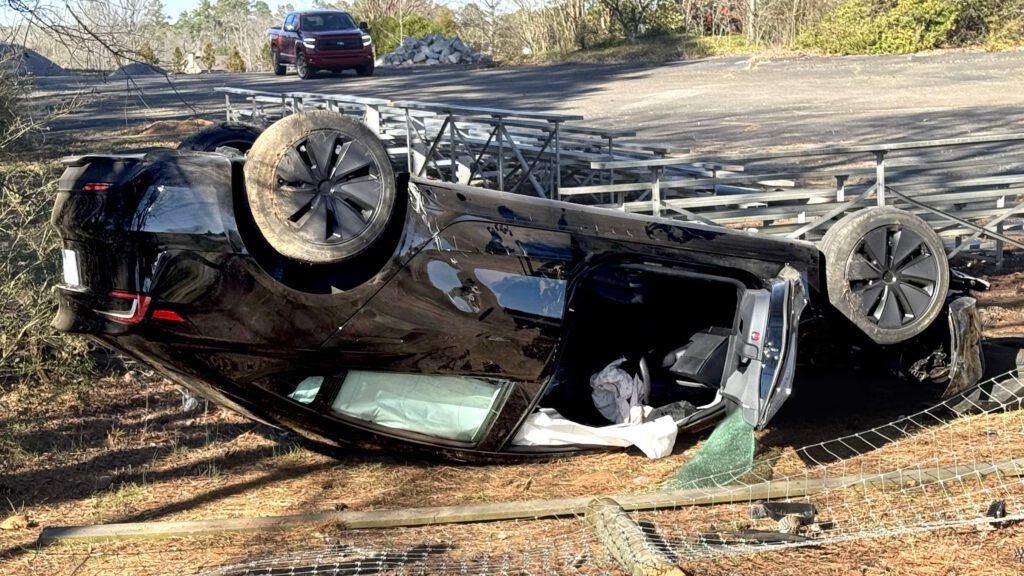A recent incident involving a Tesla Model 3 has sparked significant discussion about the reliability of autonomous driving technology, particularly Tesla’s Full Self-Driving (FSD) system. The crash, which occurred while the vehicle was operating in FSD mode, raises critical questions about the safety and effectiveness of these advanced driving systems.
What Happened During the Crash?
In a series of videos shared online, the Model 3 is seen driving normally for about 31 seconds on a straight, well-lit road. Suddenly, as another car passes, the Tesla veers sharply to the left, crosses into oncoming traffic, and crashes into a tree, rolling over in the process. This alarming behavior occurred in broad daylight with no apparent obstacles or complex traffic conditions, making the incident even more puzzling.
The driver, who was reportedly traveling at around 55 mph, described the experience as shocking. He had previously been a strong advocate for autonomous vehicles, but this incident has left him questioning the technology. Fortunately, he only suffered minor injuries, but the emotional impact was significant.
Why Is This Incident So Concerning?
The implications of this crash are far-reaching. Tesla’s FSD system relies heavily on vision-based technology, which mimics human driving behavior. While this approach has its merits, it also has limitations. Unlike systems that incorporate Lidar or radar, which can provide additional data and redundancy, Tesla’s vision-only strategy may not be sufficient in all driving conditions.
In this case, the straight road and clear visibility should have made it easier for the system to navigate safely. The sudden and erratic maneuver raises concerns about the software’s decision-making processes. Why did the car decide to leave the road? This question is at the heart of the ongoing debate about the safety of autonomous driving technologies.
The Role of Lidar and Radar
One of the key criticisms of Tesla’s approach is its decision to forgo Lidar and radar systems, which many experts believe could enhance safety. These technologies can help vehicles “see” in adverse weather conditions and provide a backup to vision-based systems. While Tesla’s CEO Elon Musk has been vocal about his preference for a vision-only approach, this incident may prompt a reevaluation of that strategy.
The driver’s experience highlights a crucial point: while the technology is advancing rapidly, it still has significant hurdles to overcome. The lack of Lidar and radar could be a contributing factor to the unexpected behavior exhibited by the Model 3.
What’s Next for Tesla and Autonomous Driving?
As investigations into this crash unfold, Tesla will need to address the concerns raised by this incident. The driver has requested all data related to the crash, which could provide valuable insights into what went wrong. Previous incidents involving Tesla’s FSD have often been met with explanations that offered some reassurance to supporters of the technology. However, this case appears to be different, as it showcases a clear and dangerous failure of the system.
The driver’s statement about wanting another Tesla but refusing to use FSD again speaks volumes. It reflects a growing sentiment among consumers who are eager for innovation but also demand safety and reliability. As autonomous driving technology continues to evolve, manufacturers must prioritize transparency and accountability to maintain consumer trust.
In the end, the big takeaway? Autonomous driving isn’t about perfection—it’s about smarter adjustments. Start with one change this week, and you’ll likely spot the difference by month’s end.

